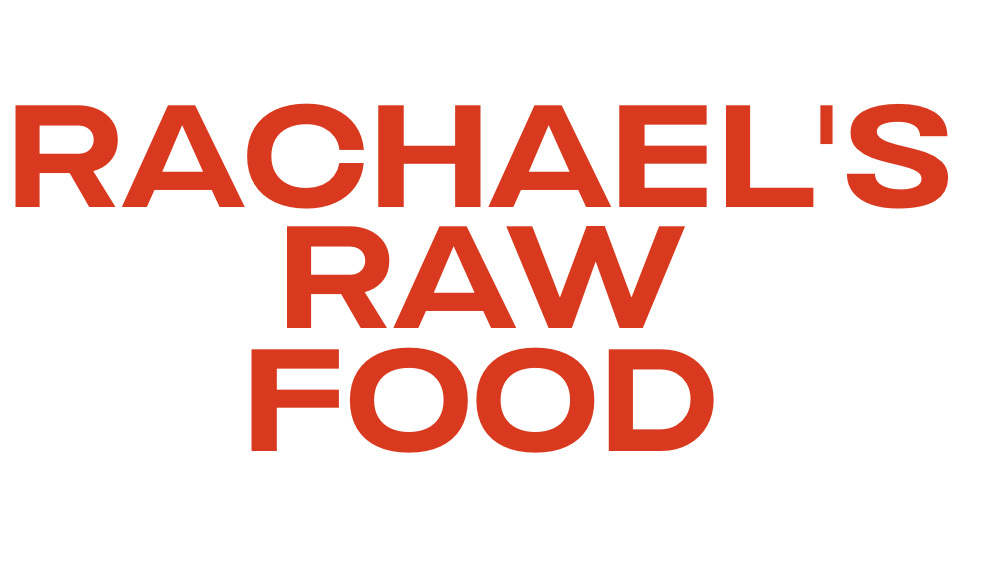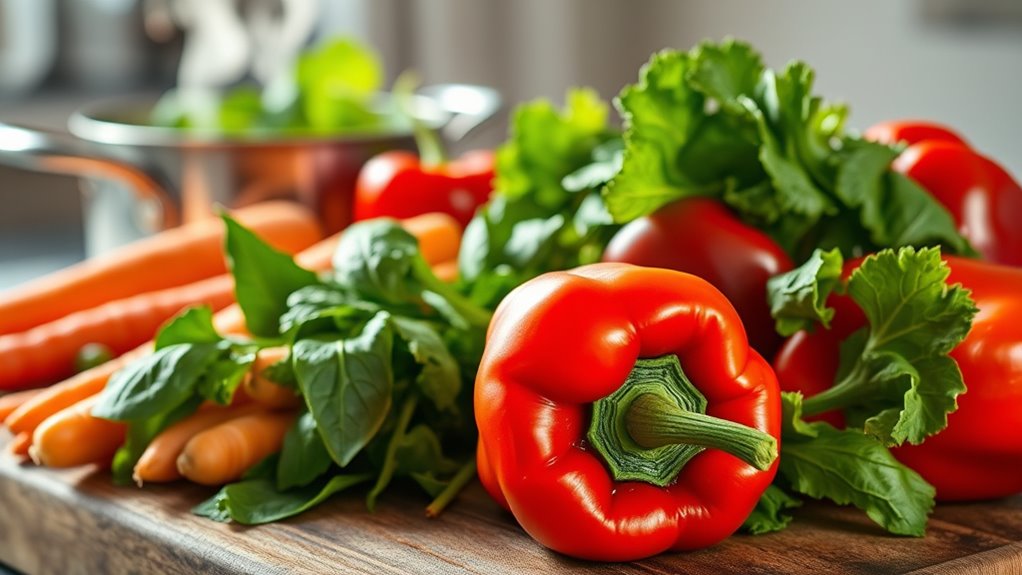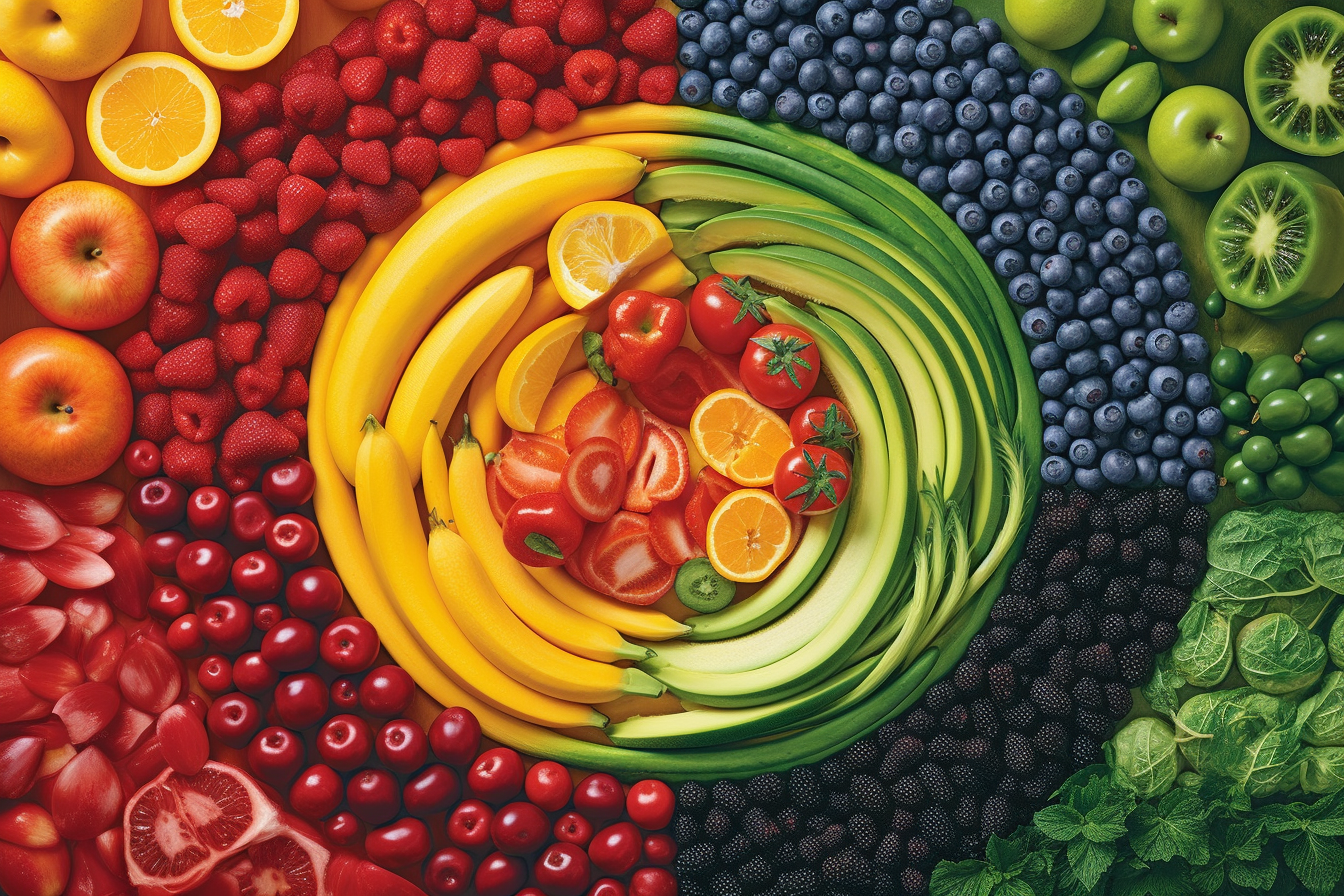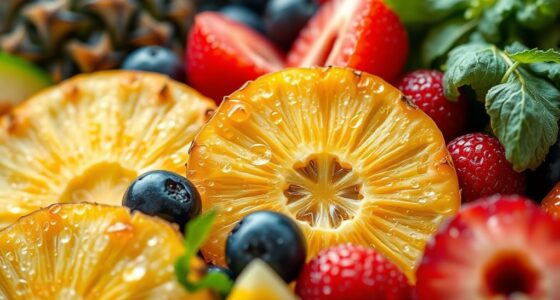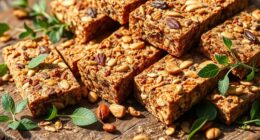To maximize vitamin retention and absorption, choose cooking methods like steaming, microwaving, or stir-frying, which use less water and shorter times. Avoid boiling vegetables heavily, as water-soluble vitamins like C and B leach into the cooking water. Adding healthy fats can boost absorption of fat-soluble vitamins A, D, E, and K. Properly timing your cooking helps preserve nutrients while making them easier for your body to absorb. Keep exploring to learn more tips!
Key Takeaways
- Steaming and microwaving preserve more water-soluble vitamins by using less water and shorter cooking times.
- Cooking with healthy fats enhances absorption of fat-soluble vitamins like A, D, E, and K.
- Short, gentle cooking methods prevent heat-sensitive vitamin loss in vegetables.
- Avoid discarding cooking water to prevent nutrient loss of water-soluble vitamins.
- Properly timed cooking breaks down cell walls, increasing vitamin bioavailability without excessive nutrient degradation.
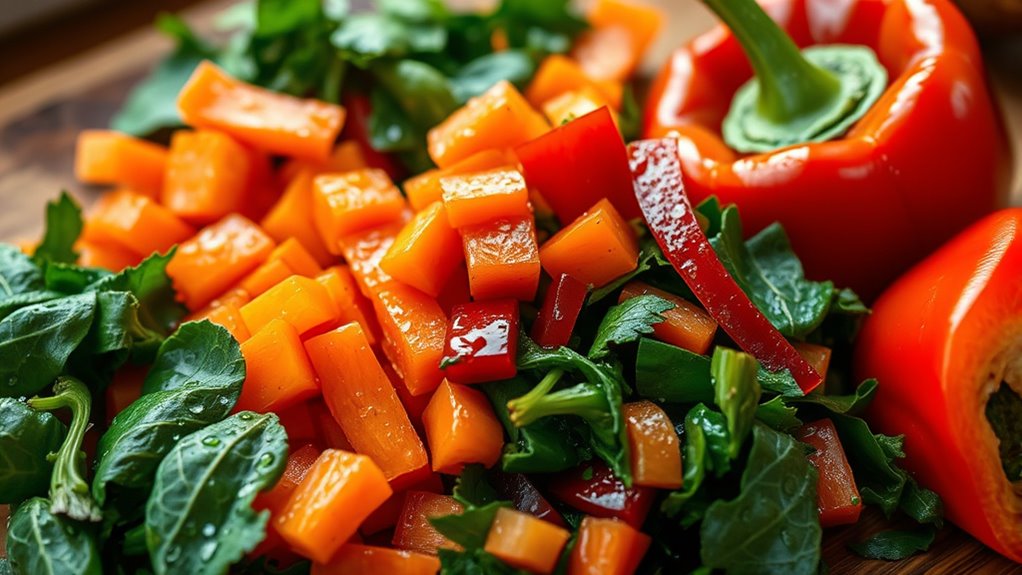
Have you ever wondered how your cooking methods affect the vitamins in your food? The way you prepare and cook your meals can considerably influence nutrient preservation and the vitamin bioavailability — that is, how well your body can absorb and utilize these nutrients. Some cooking techniques help release certain vitamins, making them more accessible, while others can cause nutrient loss, reducing the health benefits of your food. Understanding these effects allows you to make smarter choices in the kitchen, ensuring you get the most vitamins possible from your meals.
When you boil vegetables, for example, some water-soluble vitamins like vitamin C and certain B vitamins tend to leach into the cooking water. If you discard that water, you’re losing a substantial portion of these nutrients. To maximize nutrient preservation, you might consider steaming or microwaving vegetables instead. These methods use less water and shorter cooking times, which helps retain more vitamins. Plus, steaming can sometimes increase vitamin bioavailability by softening cell walls, making it easier for your body to absorb nutrients. So, a quick steam can boost the nutritional value of your veggies compared to boiling them for a long time.
Cooking also impacts the bioavailability of nutrients. For instance, heating tomatoes increases the bioavailability of lycopene, a powerful antioxidant. The heat breaks down the plant’s cell walls, releasing this nutrient and making it easier for your body to absorb. Conversely, overcooking leafy greens can lead to considerable vitamin loss, especially vitamins like folate and vitamin C, which are sensitive to heat. This means that cooking times and temperatures matter — gentle, shorter cooking processes often preserve more vitamins and enhance their bioavailability.
Heating tomatoes boosts lycopene absorption, but overcooking greens can cause vitamin loss.
Another factor is the use of fats. Some vitamins, such as vitamins A, D, E, and K, are fat-soluble, meaning they dissolve in fats and oils. Cooking foods with healthy fats can improve their absorption, boosting vitamin bioavailability. For example, adding a drizzle of olive oil to cooked spinach not only enhances flavor but also helps your body absorb the fat-soluble vitamins more efficiently.
Frequently Asked Questions
Which Cooking Method Preserves the Most Vitamins?
When choosing a cooking method that preserves the most vitamins, you should consider how nutrient degradation varies with different techniques. Steaming and microwaving are best because they use less water and shorter cooking times, minimizing nutrient loss. Stir-frying also works well due to quick cooking at high heat. Avoid boiling, as it causes significant nutrient degradation through leaching into water. Your goal is to select cooking techniques that retain maximum nutrients.
Can Vitamin Content Be Restored After Cooking?
Ever wonder if you can recover lost vitamins after cooking? Unfortunately, once vitamins degrade during cooking, you can’t fully restore them. While some nutrient recovery methods, like eating raw or using minimal heat, help preserve vitamins, damaged nutrients can’t be regained through cooking. So, it’s best to prepare vegetables in ways that minimize vitamin degradation, ensuring you get the maximum nutritional benefit from your meals.
How Does Cooking Affect Mineral Retention?
Cooking impact on mineral retention varies because minerals generally have high mineral stability, meaning they don’t easily break down with heat. However, water-soluble minerals like potassium, calcium, and magnesium can leach into cooking water, reducing overall content. To minimize mineral loss, you should use minimal water, avoid overcooking, and consider steaming or roasting. This way, you preserve more minerals and maximize nutrient intake during your meal.
Are Raw Foods Always More Nutritious Than Cooked?
Think tempting, tasty, raw foods are always better? Not necessarily! While raw food benefits include preserving some nutrients, cooking advantages like boosting bioavailability and breaking down tough fibers can enhance digestibility. You can’t always assume raw is superior; sometimes, cooking reveal nutrients, making them more accessible. So, balance is key—enjoy raw foods for freshness, but don’t overlook cooked options for their culinary and nutritional advantages.
What Are the Best Practices to Minimize Nutrient Loss?
To minimize nutrient loss, you should focus on proper food pairing and storage techniques. Pair vitamin-rich foods with those that boost absorption, like adding a little fat to vegetables for better nutrient uptake. Store produce in cool, dark places or the fridge to slow nutrient degradation. Also, use gentle cooking methods like steaming or sautéing, and avoid overcooking, which can destroy essential nutrients.
Conclusion
So, as you prepare your meals, remember that gentle cooking helps preserve those precious nutrients your body craves. A little care goes a long way, ensuring you receive the full benefits without sacrificing flavor. Embrace mindful cooking methods, and you’ll nourish yourself with vibrant, wholesome food that truly supports your well-being. In doing so, you nurture not just your body but also your appreciation for the simple joys of healthy living.
